The Ultimate Post-Shower Body Care Routine: From Towel to Glow
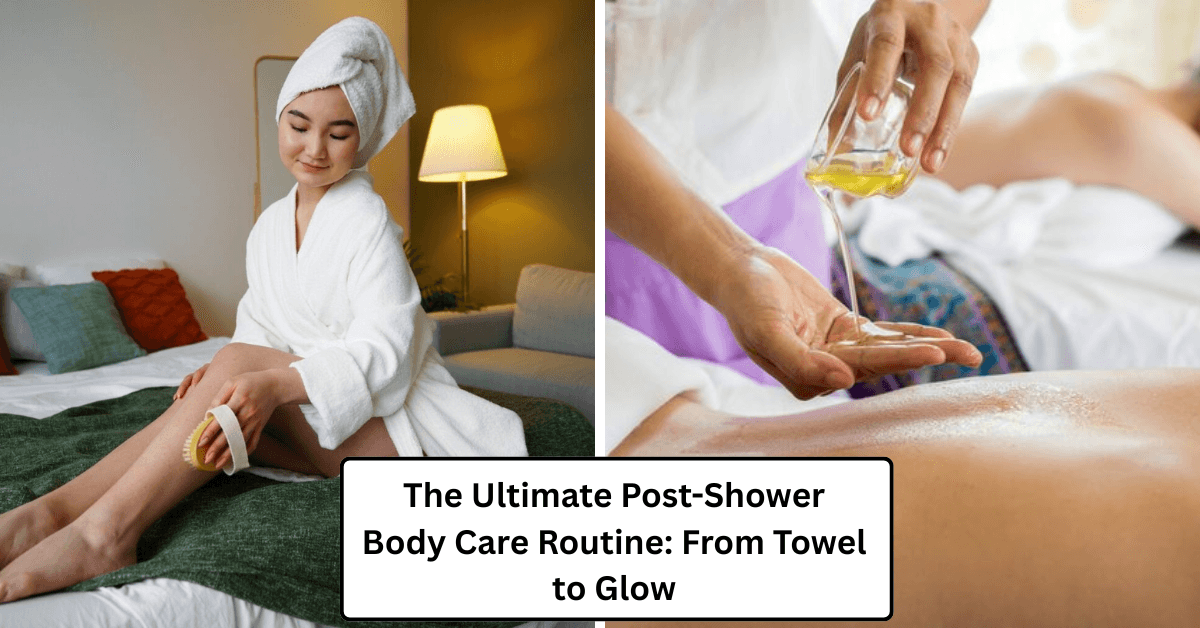
A good shower can be one of the most refreshing moments of the day. Whether it’s a quick rinse before work or a long, luxurious soak at night, showering isn’t just about cleanliness — it’s an opportunity to reset your body and mind. But the truth is, your post-Shower Body Care Routine can make or break your skin health. What you do immediately after stepping out of the shower determines whether your skin will stay soft, hydrated, and radiant — or end up dry, irritated, and dull.
In this guide, we’ll walk through the ultimate post-shower body care routine, step by step, with tips for every skin type, from the importance of patting dry (not rubbing!) to the right order for applying oils, lotions, and treatments. By the end, you’ll have a complete blueprint for turning your after-shower minutes into a self-care ritual your skin will thank you for.
Why Post-Shower Care Matters
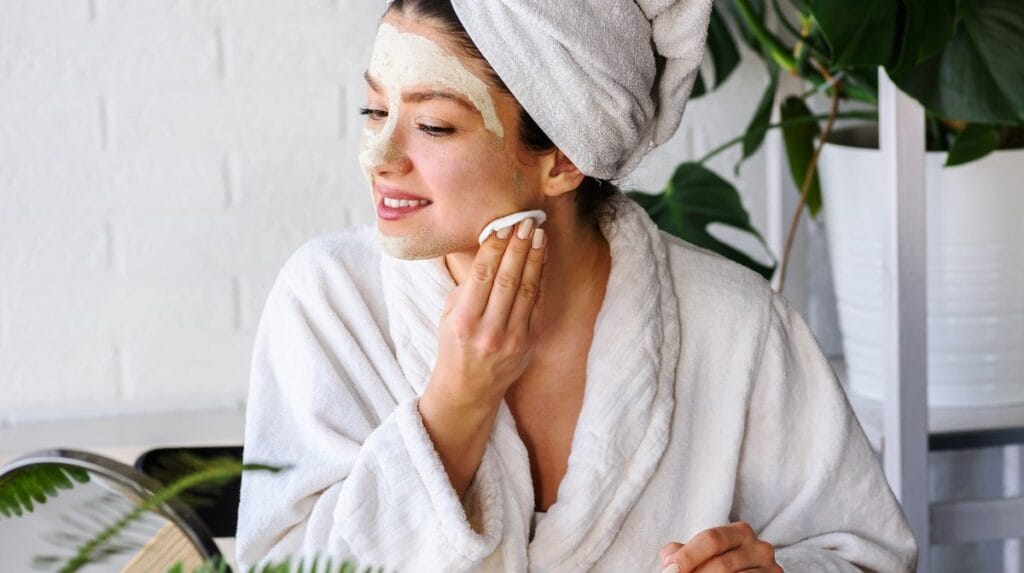
Many people think of skincare as something that happens before or during a shower — cleansing, exfoliating, or shaving. However, the moments right after you towel off are crucial for maintaining healthy, hydrated skin. Following a proper Post-Shower Body Care Routine helps lock in moisture, restore the skin’s natural barrier, and keep your body soft and radiant throughout the day.
When you shower, hot water and soap strip your skin of its natural oils. Your pores are open, your skin barrier is temporarily weakened, and moisture begins evaporating as soon as you step out. This process is called transepidermal water loss, and it can lead to dryness, tightness, or even irritation if you don’t seal that moisture back in quickly.
A good post-shower routine:
- Locks in hydration
- Restores the skin’s natural lipid barrier
- Keeps your body soft and supple
- Reduces the risk of itching, flaking, or premature aging
In short, what you do in those few minutes after bathing has a lasting impact on how your skin looks and feels throughout the day.
The Right Way to Towel Dry

It may sound simple, but the way you dry off after a shower sets the tone for your entire routine.
Don’t rub — pat
Rubbing your skin with a towel can cause micro-tears and irritation, especially if you’ve exfoliated or shaved. Instead, use a clean, soft towel and gently pat your skin dry. Leave a slight dampness — about 10–20% moisture — on your skin. This helps your products absorb better and boosts hydration.
Tip:
If you have sensitive or acne-prone skin on your back or chest, use a separate towel for your face and body to prevent bacteria transfer.
Moisturize While Damp
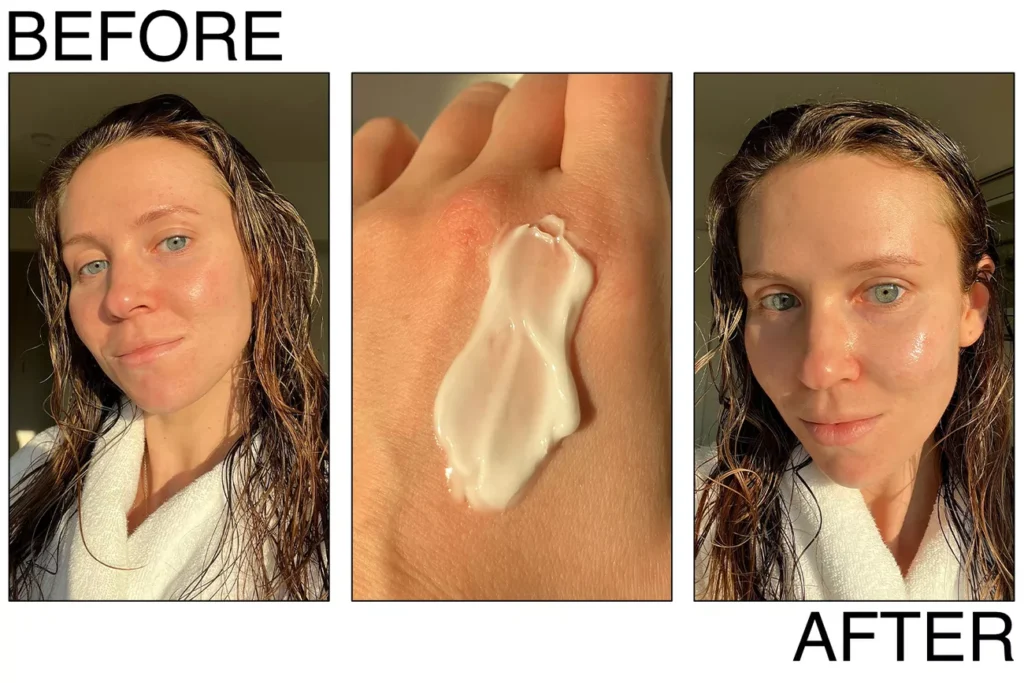
Timing is everything when it comes to moisturizing. Your skin starts losing moisture within 30 seconds of drying off, so it’s best to apply products while it’s still slightly damp. Incorporating this step into your Post-Shower Body Care Routine helps trap the water already on your skin and prevents dryness, keeping it soft, smooth, and hydrated all day long.
Here’s how to choose the right product based on your needs:
Body Lotion (Lightweight Hydration)
Perfect for normal to oily skin or humid climates. Look for lotions with:
- Glycerin or hyaluronic acid (to draw in moisture)
- Aloe vera or chamomile (to soothe)
- Vitamin E (to protect against free radicals)
Body Cream (Deep Nourishment)
For dry or mature skin, body creams offer richer moisture. Choose formulas containing:
- Shea butter
- Cocoa butter
- Ceramides
- Fatty acids
Oils are great as a final step to seal in moisture. Popular options include:
Body Oil (Moisture Lock)
- Jojoba oil – balances oil production
- Argan oil – deeply hydrating and non-greasy
- Coconut oil – antibacterial and soothing
- Rosehip oil – helps with scars and pigmentation
Apply oils right after lotion for a double-layer of hydration — this technique is known as “moisture sandwiching.”
Targeted Treatments
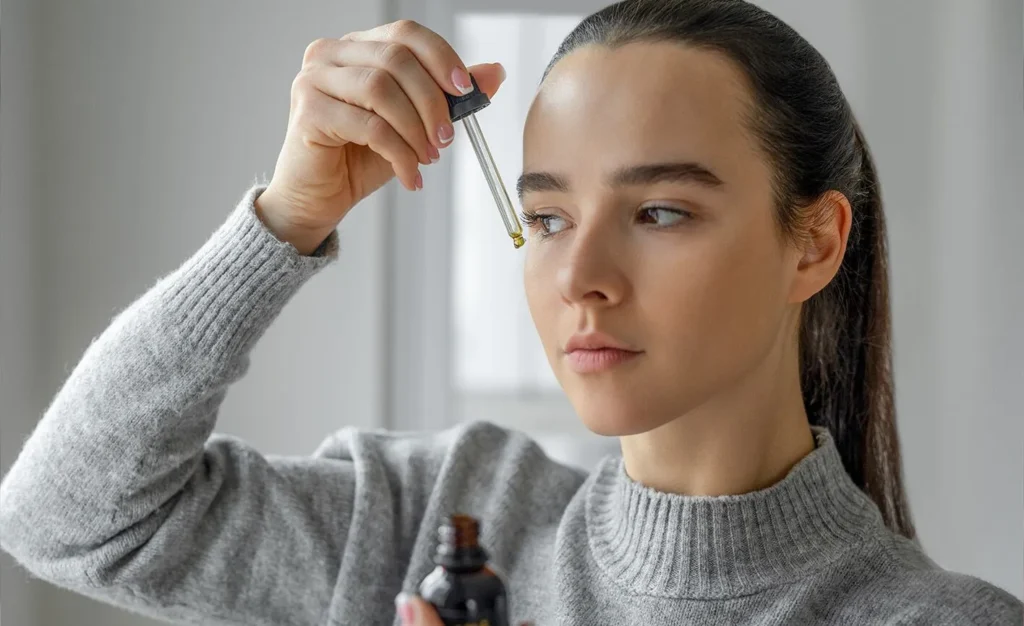
Once your skin is hydrated, you can address specific concerns like cellulite, stretch marks, or hyperpigmentation.
Body Serums
Just like facial serums, body serums deliver concentrated ingredients to the skin. They can help with:
- Brightening (vitamin C, niacinamide)
- Firming (caffeine, peptides)
- Smoothing (AHAs like lactic acid)
Apply these before your lotion or cream for better absorption.
Problem Area Treatments
For areas that need extra care:
- Keratosis Pilaris: Use a lotion with lactic acid or urea.
- Stretch Marks: Massage with oils rich in vitamin E or rosehip.
- Cellulite: Look for caffeine-based gels and use upward, circular motions.
Massage not only enhances product absorption but also improves circulation and lymphatic drainage — giving skin a healthier appearance over time.
Hand and Foot Care
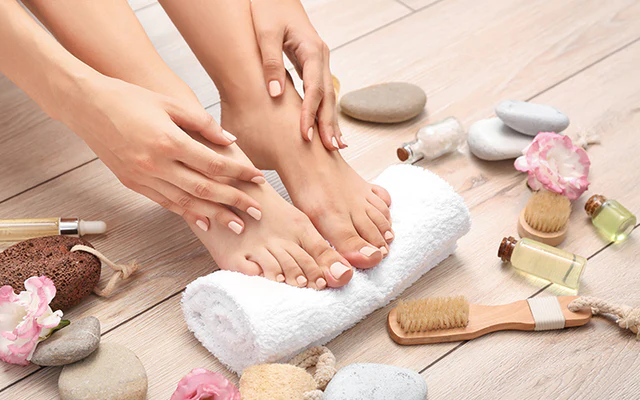
Hands and feet are often the most neglected parts of post-shower care, yet they take the most daily stress.
Hands:
- Apply a rich hand cream with shea butter or glycerin.
- Don’t forget the cuticles — massage in a few drops of jojoba or almond oil.
- If possible, wear cotton gloves for 15 minutes afterward to lock in moisture.
Feet:
- Use a foot cream with urea or lactic acid to soften rough areas.
- For cracked heels, apply an occlusive balm (like petroleum jelly) and wear cotton socks overnight.
- Regularly exfoliate with a pumice stone or foot scrub 2–3 times a week.
Post-Shower Body Mists and Deodorants

A post-shower body mist can be a lovely way to refresh and lightly scent your skin. Look for alcohol-free versions that won’t dry out your skin.
When it comes to deodorant, apply it only after your underarms are completely dry — dampness can reduce effectiveness and lead to irritation. If you prefer natural deodorants, consider those with magnesium hydroxide or arrowroot powder, which neutralize odor without blocking pores.
Hairline and Scalp Care
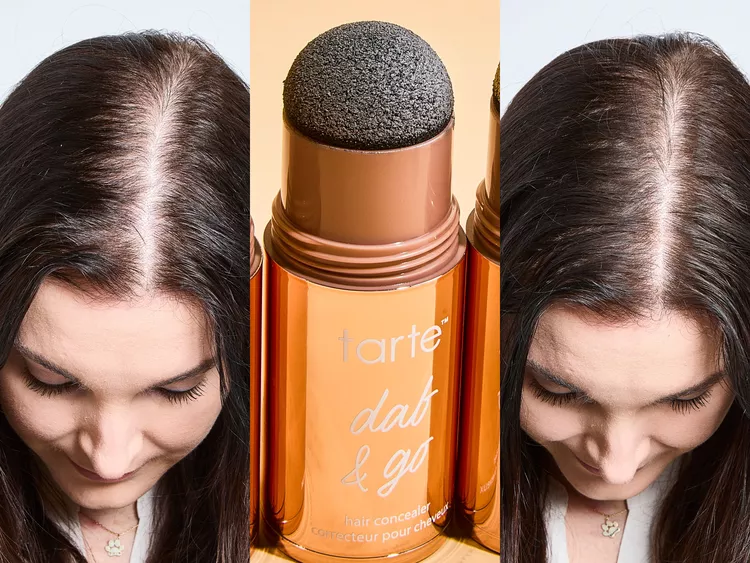
Your scalp is skin too, and it needs moisture just like the rest of your body. After towel drying your hair:
- Use a leave-in conditioner or scalp serum to maintain balance.
- If you have a dry scalp, massage a few drops of light oil (like argan or jojoba) into the roots.
Avoid heavy oils if you’re prone to buildup or dandruff — instead, opt for water-based serums with niacinamide or panthenol.
Fragrance Layering
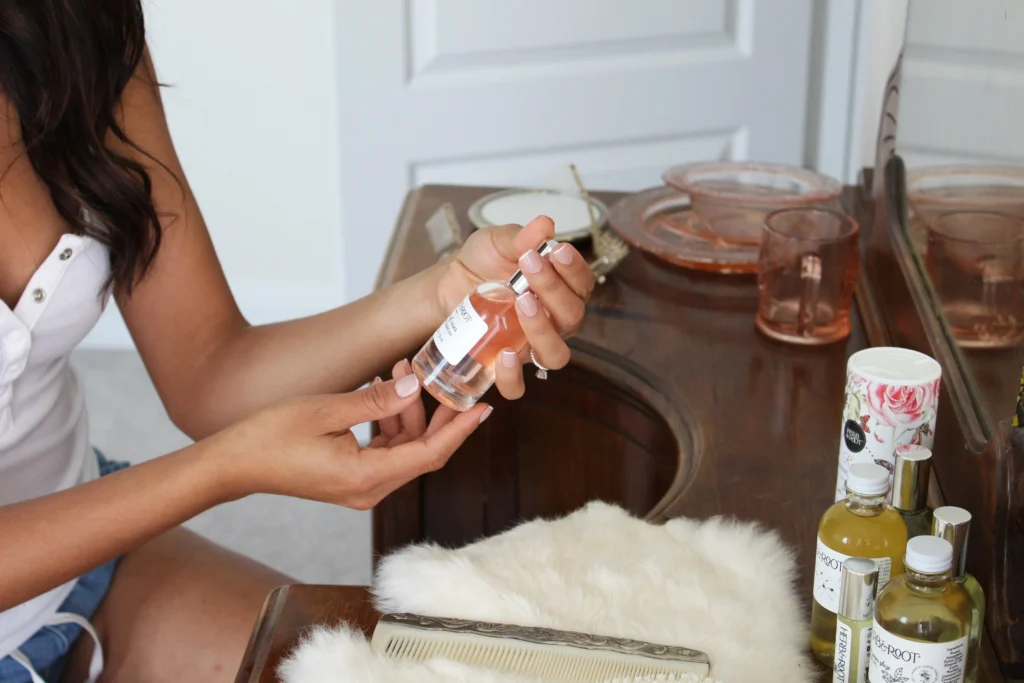
If you love perfume, your post-shower routine is the perfect time to layer it for long-lasting scent.
- Start with a scented body wash (optional).
- Follow with a matching lotion or oil — fragrance adheres better to moisturized skin.
- Finish with your perfume or body mist, applied to pulse points (neck, wrists, behind ears, knees, and elbows).
For a softer scent, spritz perfume into the air and walk through the mist. The result? A subtle, all-day fragrance that feels natural and luxurious.
Clothing and Environment

Even after your skincare products are applied, your choices can affect their effectiveness.
Choose Breathable Fabrics
Stick to cotton, linen, or bamboo fabrics right after showering. These allow your skin to breathe and prevent sweating or irritation.
Clean Towel & Robe Habits
Always use a fresh towel and robe every 2–3 days. Damp fabrics are breeding grounds for bacteria and mildew.
Bedroom Humidity
If you shower at night, keep a humidifier in your room. This helps maintain your skin’s moisture barrier, especially during dry seasons or when air conditioning is on.
Morning vs. Night Routines
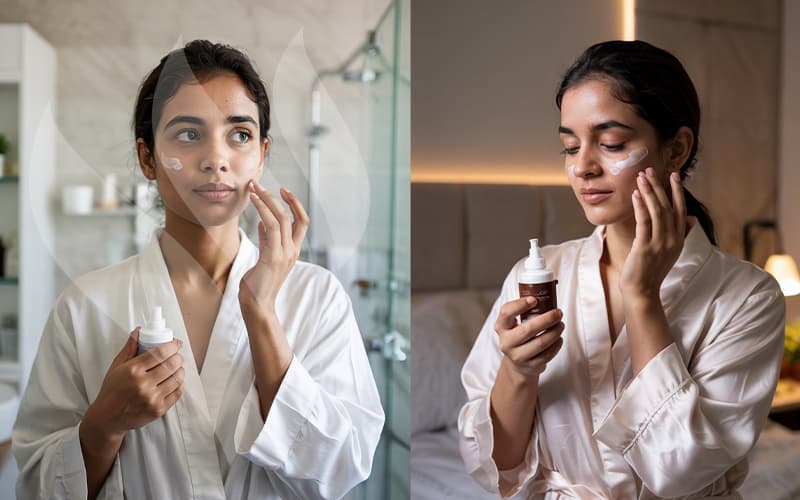
Your post-shower care can differ depending on the time of day.
Morning Routine:
- Opt for lightweight lotions or gels that absorb quickly.
- Choose ingredients like vitamin C for brightening and SPF if you’ll be exposed to sunlight.
- Avoid heavy oils that can make you feel sticky during the day.
Night Routine:
- Use richer creams or body butters for deep overnight nourishment.
- Incorporate retinol body treatments (only a few times per week).
- Focus on relaxing scents like lavender or chamomile to enhance sleep quality.
Tailoring to Your Skin Type
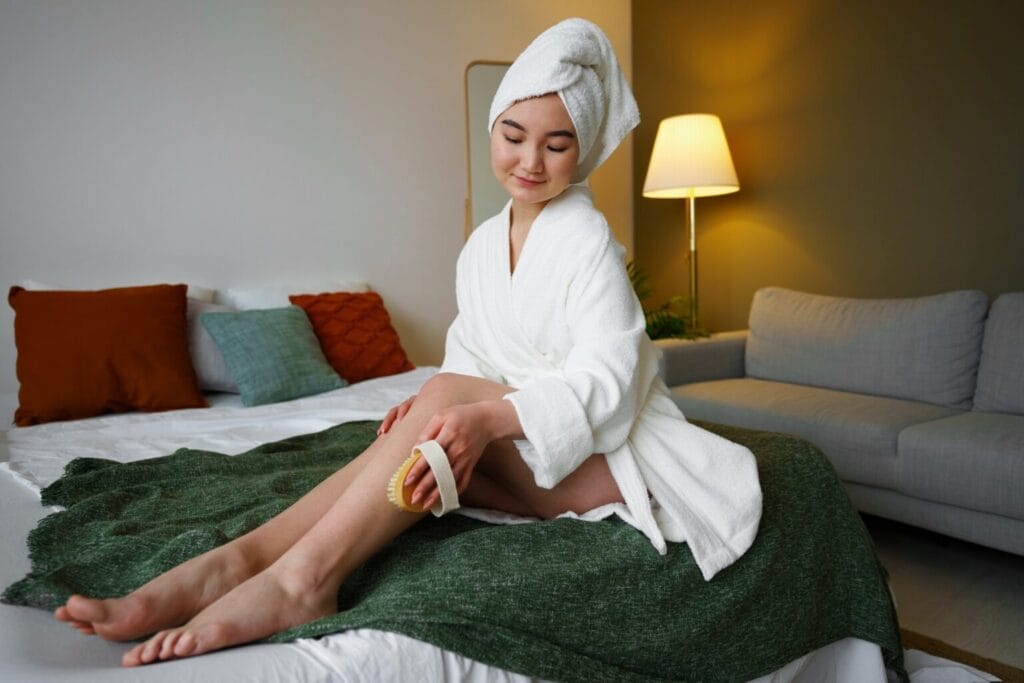
Just like your face, your body’s skin can be dry, oily, sensitive, or a combination. Tailoring your post-shower care to your skin type makes all the difference.
Dry Skin:
- Avoid long, hot showers.
- Use oil-based body washes.
- Apply thick creams or body butters immediately after showering.
- Seal with an oil or balm for extra hydration.
Oily Skin:
- Use lightweight lotions with ingredients like aloe vera or niacinamide.
- Avoid overly rich creams that can clog pores.
- Try body mists with witch hazel or green tea extract.
Sensitive Skin:
- Stick to fragrance-free, hypoallergenic products.
- Avoid alcohol-based mists or sprays.
- Choose natural oils like squalane or jojoba, which are gentle and non-reactive.
Combination Skin:
- Use lighter products on oily zones (like chest and back) and thicker creams on dry areas (legs, elbows).
The Extras — Pampering Beyond Basics
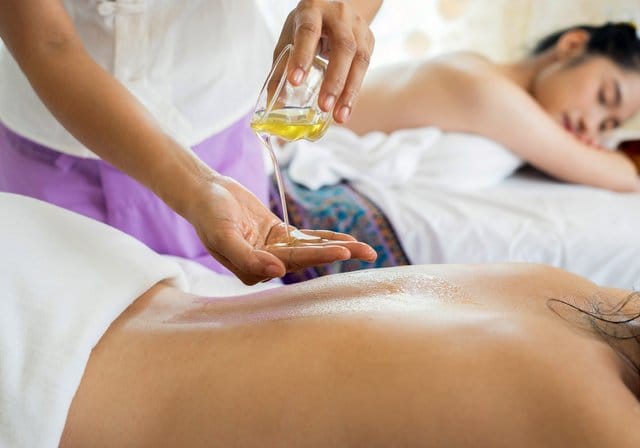
Once or twice a week, elevate your post-shower care into a true spa ritual.
Body Masks
Just like face masks, body masks deliver nutrients and hydration. Clay masks can detoxify, while hydrating masks with honey or aloe soothe and replenish.
Dry Brushing (Pre-Shower)
Though technically a pre-shower step, dry brushing improves lymphatic drainage and makes post-shower moisturizers work better.
Massage Tools
Use a gua sha or body roller to massage your legs, arms, or abdomen. This promotes blood flow, helps with puffiness, and enhances product penetration.
Aromatherapy
Add a calming element by diffusing essential oils like lavender or eucalyptus in your bathroom. Scents can turn your routine into a mindful ritual instead of a chore.
Common Post-Shower Mistakes to Avoid

Even with the best intentions, some habits can undermine your efforts. Here’s what to steer clear of:
- Using hot water: It strips skin of natural oils.
- Skipping moisturizer: Especially in winter, this leads to dryness and flaking.
- Rubbing towel too harshly: Causes irritation and damage.
- Applying deodorant on wet skin: Reduces effectiveness and can cause rashes.
- Overusing exfoliants: Too much can weaken your skin barrier.
- Ignoring the neck and behind the ears: These areas often get neglected but can harbor sweat and bacteria.
The Science Behind Moisture Retention
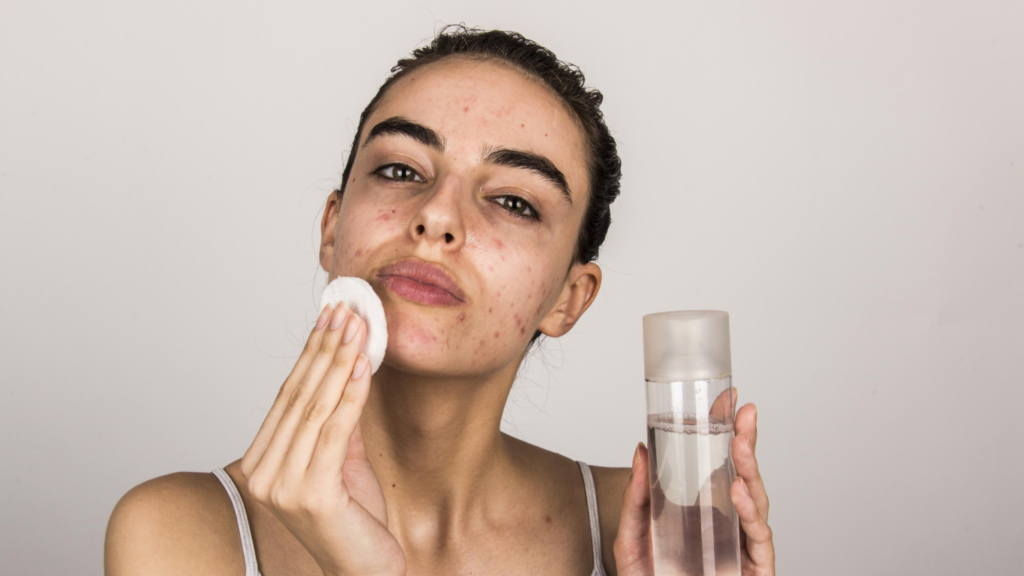
For the skincare enthusiasts, here’s what’s really happening beneath the surface.
Your skin barrier — scientifically known as the stratum corneum — is like a brick wall. The “bricks” are your skin cells, and the “mortar” is made of lipids (fats). When this barrier is healthy, it holds moisture in and keeps irritants out.
Showering temporarily disrupts this barrier. That’s why applying emollients (to soften), humectants (to attract water), and occlusives (to lock it in) immediately after helps restore balance.
- Humectants: Glycerin, hyaluronic acid, aloe vera
- Emollients: Shea butter, squalane, fatty acids
- Occlusives: Petrolatum, beeswax, plant oils
The perfect routine uses all three in harmony.
A Sample Post-Shower Routine (10-Minute Blueprint)

Here’s how you can fit it all together:
- Pat Dry (1 min) – Leave a little moisture on your skin.
- Apply Body Serum (1 min) – Focus on problem areas.
- Massage Lotion or Cream (2 min) – Use circular motions.
- Seal with Body Oil (1 min) – For lasting glow.
- Treat Hands & Feet (2 min) – Apply targeted creams.
- Apply Deodorant & Fragrance (2 min) – Finish fresh and confident.
- Dress in Breathable Clothes (1 min) – Let your skin breathe.
Ten minutes — and you’ve turned a simple shower into a full-body self-care ritual.
Your post-shower body care routine isn’t just about lotions and oils — it’s about honoring your skin and giving yourself a moment of mindfulness each day. The warmth of the water, the scent of your moisturizer, the feeling of soft, hydrated skin — all of it contributes to your physical and emotional well-being.
Think of it as more than skincare; it’s skin love. By following these steps, you’re not just preventing dryness or irritation — you’re creating a daily act of self-respect.
So the next time you step out of the shower, don’t rush. Take a few extra minutes to care for your body. You’ll feel the difference not only on your skin but in your entire sense of self.





